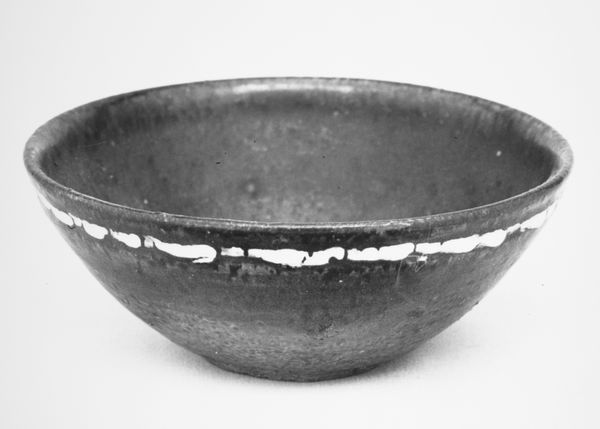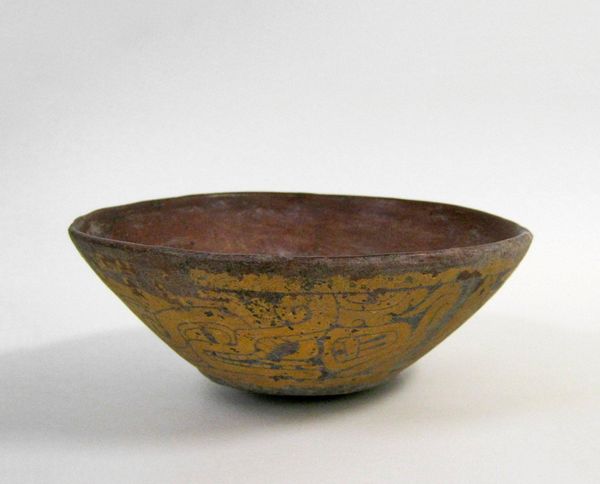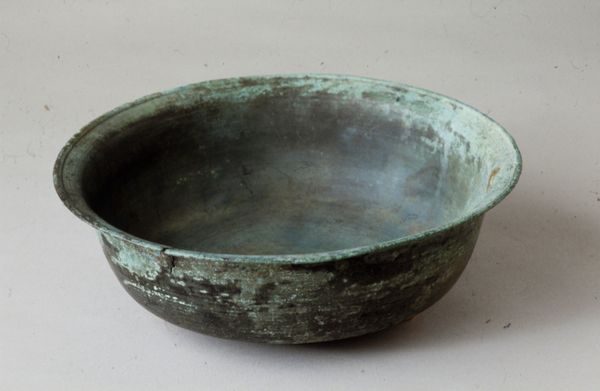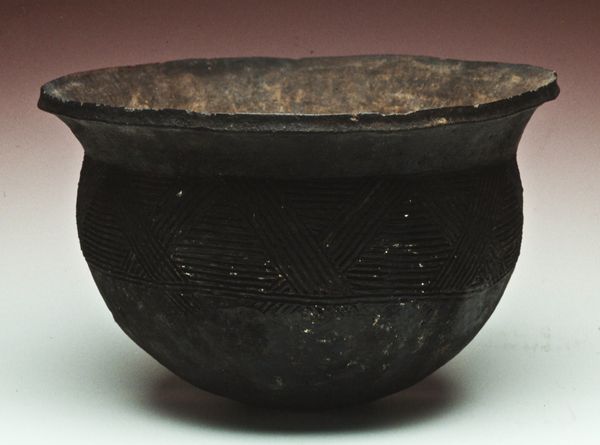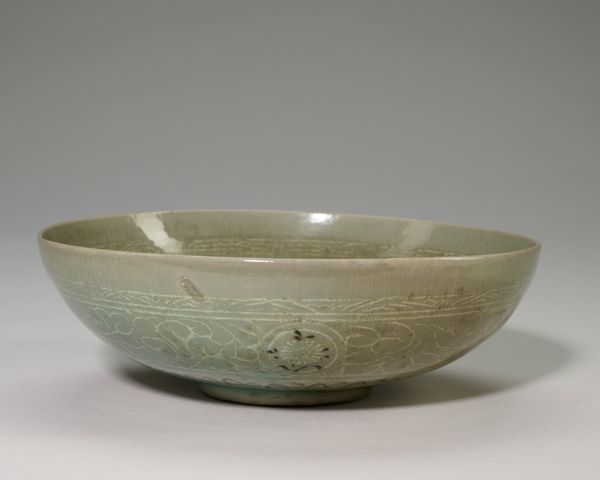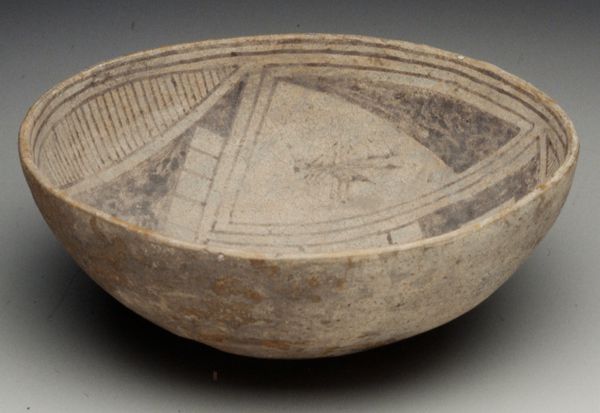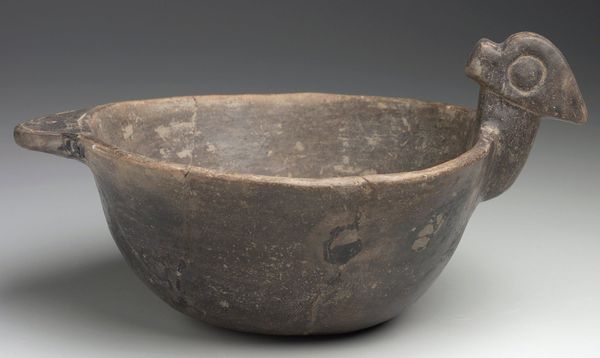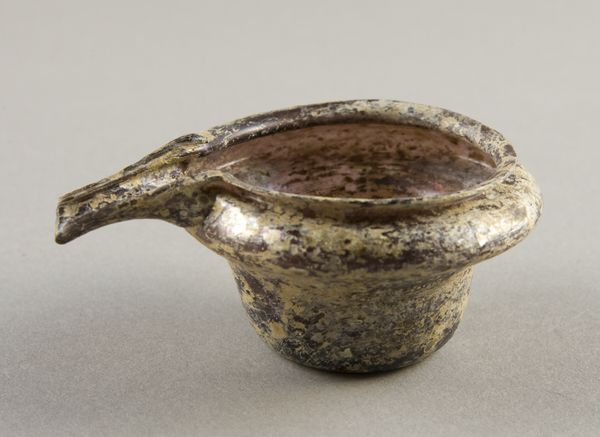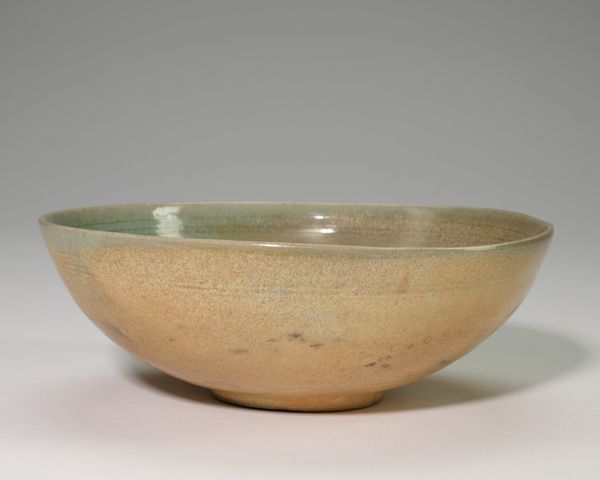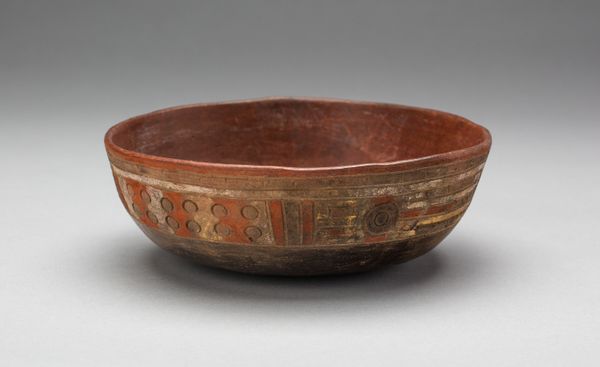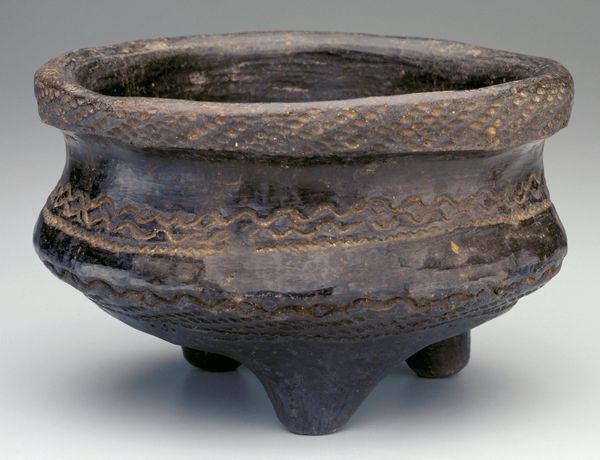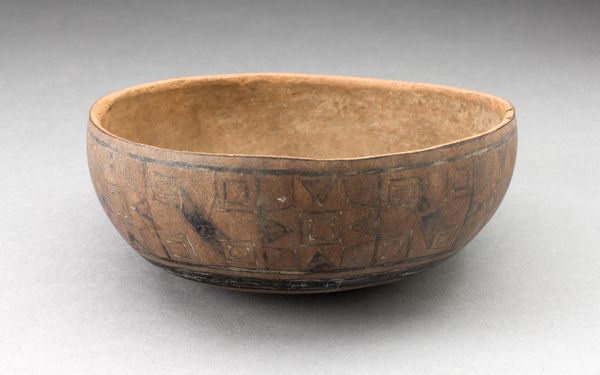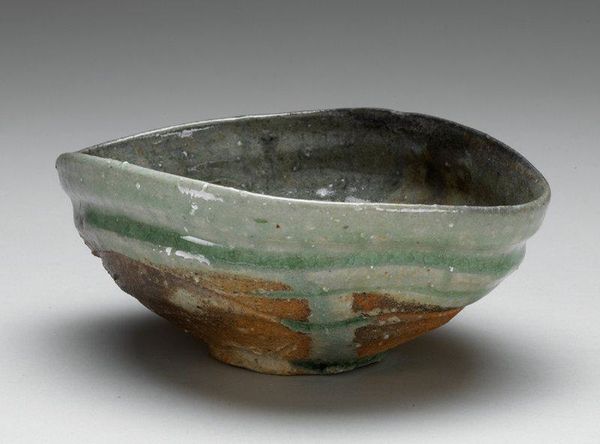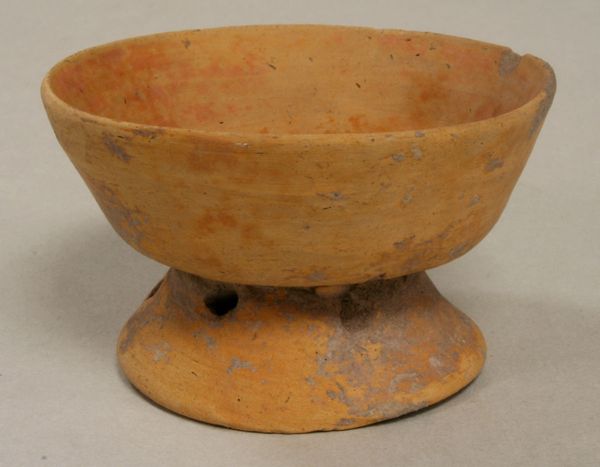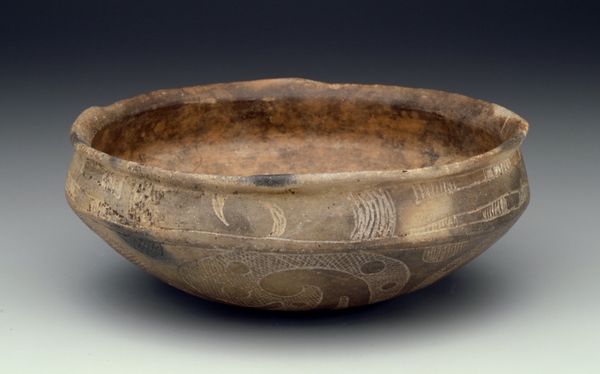
ceramic, earthenware, wood
#
medieval
#
asian-art
#
ceramic
#
japan
#
form
#
earthenware
#
stoneware
#
abstraction
#
wood
Dimensions: H. 2 in. (5.1 cm); Diam. 5 3/4 in. (14.6 cm)
Copyright: Public Domain
Editor: Here we have a 17th-century earthenware teabowl by Seisuke, housed right here at the Met. The surface looks wonderfully textured and rustic, almost like tree bark. How do you approach something so… tactile? Curator: Indeed. Initially, we are confronted by the rough texture and asymmetrical form, diverging considerably from Western notions of ideal beauty or functionality. Consider the deep pooling of the glaze: the variations in its tonality draw the eye inward, creating a visual vortex that speaks to the significance of the void, or 'mu,' so prevalent in Eastern philosophy. The strategic placement of the glaze also articulates the artist's deliberate interaction with chance during the firing process. Would you agree that this ‘accidental’ aesthetic is actually very controlled? Editor: I see your point. There’s definitely an intention behind what looks like happenstance. How does that inform our understanding of the piece’s purpose? Curator: The aesthetic celebrates the imperfections, the wabi-sabi philosophy. Notice how the bowl rests almost precariously on its small base. The weight, the balance, is almost illusory. This delicate instability speaks to the impermanence of all things. The overall form could suggest natural processes, erosion, or the gradual shaping forces of the natural world. Editor: That's insightful. I was caught up in the texture, but the form and balance make it so much deeper. It challenges the eye! Curator: Precisely. This bowl compels us to question preconceived notions of beauty and utility. We must consider the philosophical undertones and, thereby, come to a deeper aesthetic understanding of both the bowl itself and, perhaps, the world around it. Editor: I’ll definitely remember to consider those abstract forms and philosophical approaches next time. Thanks!
Comments
No comments
Be the first to comment and join the conversation on the ultimate creative platform.
